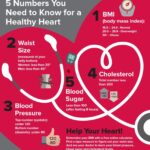Safely Returning to Solid Food After Wisdom Tooth Extraction and Bone Graft: Complete Recovery Guide

Introduction: Navigating Your Post-Surgery Diet
Recovering from wisdom tooth extraction or a dental bone graft requires careful attention to your diet. The foods you choose can directly impact your comfort, healing speed, and risk of complications. Knowing when and how to safely eat solid food again is crucial for optimal outcomes. This guide offers detailed, actionable advice for each phase of recovery, ensuring you have the knowledge and resources to heal effectively.
Understanding the Recovery Process
The mouth undergoes significant healing after oral surgery. Both wisdom tooth extraction and bone grafting involve incisions and, in many cases, stitches. The first few days post-surgery are the most delicate: your body forms blood clots to protect the surgical sites, and the tissues begin to repair. Introducing solid foods too early can disrupt these processes, increasing the risk of complications like dry socket or graft failure. Thus, following a staged diet is essential.
Recommended Diet After Wisdom Tooth Extraction
First 24-48 Hours: Liquids and Very Soft Foods
Immediately after your wisdom tooth extraction, prioritize hydration and nourishment without chewing. Nutrition experts and oral surgeons recommend sticking to liquids and soft foods, which minimize irritation and the risk of dislodging blood clots. Suitable choices include applesauce, yogurt, pudding, mashed potatoes, blended soups, and smoothies eaten with a spoon (never a straw, as suction can cause dry socket) [2] [3] [4] .
Days 2-4: Gradual Reintroduction of Soft, Semi-Solid Foods
As swelling and discomfort begin to subside, you can introduce slightly more substantial foods. Scrambled eggs, oatmeal, soft pasta, and cooked vegetables are appropriate at this stage. Foods should require minimal chewing and be served at a lukewarm temperature to avoid irritation [5] .
Days 4-7: Carefully Adding More Textured Foods
After the first three days, many people can start adding more variety, such as spaghetti, soft-cooked fish, tofu, and well-cooked vegetables. Continue avoiding crunchy, hard, spicy, or acidic foods. Monitor your healing carefully, and return to softer foods if you experience discomfort [5] .
When to Resume Solid Foods
Most people can begin adding solid foods about one week after wisdom tooth extraction, provided no complications arise. However, this timeline can vary based on individual healing rates, the complexity of your surgery, and your dentist’s recommendations. Foods like chicken, soft fruits, and cooked grains may be tolerated at this point, but you should continue to avoid nuts, seeds, chips, and chewy meats until your provider confirms full healing [2] [3] .
Special Considerations for Bone Graft Patients
Why Bone Grafts Require Extra Care
Dental bone grafts are commonly performed to restore bone volume before implants or after extractions. The healing process for a bone graft is more sensitive than a standard extraction, as the grafted area needs time to integrate with your natural bone. Any disruption can compromise the success of the procedure. This means the timeline for resuming solid foods is generally longer and must be approached with caution.
Diet Timeline for Bone Graft Recovery
While every case is unique, general guidance for bone graft patients is as follows:
- First 48-72 hours: Only consume liquids and pureed foods (smoothies, broths, protein shakes).
- Days 3-7: Introduce soft, non-chewy foods like mashed potatoes, scrambled eggs, and soft-cooked cereals.
- After 1 week: If healing is progressing well and your oral surgeon approves, you may start incorporating more textured foods (soft pasta, soft fish, well-cooked vegetables). However, solid foods that require significant chewing or could disturb the graft site should be avoided until the provider confirms complete integration, which may take several weeks.
Always follow the specific instructions given by your oral surgeon, as healing rates and recommendations can differ. If you are unsure about a certain food or experience pain, swelling, or bleeding, revert to a softer diet and contact your provider for guidance.
Practical Steps for a Smooth Dietary Transition
Step 1: Prepare Your Pantry Ahead of Time
Stock up on soft foods, protein-rich liquids, and easy-to-eat options before your surgery. This minimizes stress and ensures you have nutritious choices available during recovery. Examples include Greek yogurt, cottage cheese, pureed soups, bone broth, and soft fruit purees. Bone broth is especially beneficial for healing due to its collagen and amino acid content [1] .
Step 2: Follow Your Provider’s Recommendations
Your oral surgeon or dentist will provide tailored instructions based on your procedure and health status. Strictly adhering to these guidelines helps avoid complications like dry socket or graft failure. If you have questions or concerns about your diet, reach out directly to your provider’s office. Many dental practices offer patient portals or after-hours contact numbers for support.
Step 3: Monitor Your Healing Progress
Pay attention to signs of normal healing versus complications. Mild swelling, discomfort, and minor bleeding are common in the first few days. However, persistent pain, significant swelling, or signs of infection (such as pus or fever) require prompt medical attention. If you notice delayed healing or difficulty tolerating even soft foods after one week, schedule a follow-up appointment with your oral surgeon.
Step 4: Gradually Advance Your Diet
Once you feel comfortable and have your provider’s approval, begin reintroducing more solid foods. Start with foods that are easy to chew and swallow, such as soft-cooked chicken, ripe bananas, or steamed vegetables. Chew on the opposite side of your mouth, and avoid biting directly onto the surgical site for at least two weeks. Continue to avoid foods that are hard, crunchy, spicy, or acidic until you are fully healed.
Step 5: Stay Hydrated and Maintain Oral Hygiene
Drinking plenty of water supports healing and helps flush away food particles from the surgical area. Practice gentle oral hygiene by rinsing with salt water (if recommended) and carefully brushing your teeth, avoiding the surgical site. Do not use mouthwash containing alcohol, as it may irritate healing tissues.
Common Challenges and Solutions
Challenge: Loss of Appetite or Difficulty Eating
It’s common to experience a reduced appetite or discomfort when eating after oral surgery. If you struggle to get enough nutrition, consider frequent small meals, protein shakes, and blending foods to a smoother consistency. Nutrient-dense options like avocados, nut butters (only after fully healed), and soft cheeses can help maintain energy and promote healing [1] .
Challenge: Worry About Complications
The fear of developing dry socket or disturbing a bone graft is understandable. To minimize risk, always avoid straws, smoking, and any vigorous rinsing or spitting during the first week. If you are unsure about any activity, consult your oral surgeon before proceeding. Most complications can be prevented with careful adherence to professional instructions.
Alternative Approaches
If you have dietary restrictions or allergies, consult with a nutritionist or your dental provider to create a personalized recovery meal plan. Plant-based patients, for example, can use pureed legumes, tofu, and soft grains to meet protein needs. If you need additional guidance, search for “post-extraction diet counseling” or contact your local dental society for referrals to specialized care providers.

Source: luzenelhorizonteymas.blogspot.com
Accessing Further Support and Information
If you need specific guidance for your situation, or have complex medical needs, consider these steps:
- Contact your oral surgeon’s office for personalized advice and follow-up care.
- Consult reputable dental organizations, such as the American Association of Oral and Maxillofacial Surgeons, for educational resources (search for “AAOMS patient resources”).
- Ask your pharmacist for recommendations on appropriate supplements if you are unable to meet your nutritional needs through food alone.
Key Takeaways
Returning to solid foods after wisdom tooth extraction or a dental bone graft is a gradual process that depends on the complexity of your surgery and your individual healing rate. Most people can reintroduce soft solids within several days and firmer foods after about one week for extractions, while bone grafts often require a longer period of caution. Always follow your provider’s instructions, monitor your recovery, and seek professional advice if healing is delayed or you encounter difficulties. With patience, proper nutrition, and attentive care, you can ensure a smooth recovery and a safe return to your normal diet.
References
- [1] Fresh Dental NC (2023). Top 20 Foods to Eat After Wisdom Teeth Removal.
- [2] Healthline (2017). What to Eat After Wisdom Teeth Removal.
- [3] GoodRx (2025). The Best Foods to Eat After Wisdom Teeth Removal.
- [4] True North Oral Surgery (2025). Best Foods to Eat After Wisdom Teeth Removal.
- [5] Toronto Beach Dental (2023). Eating After Wisdom Tooth Extraction: Tips and Soft Food Ideas.






